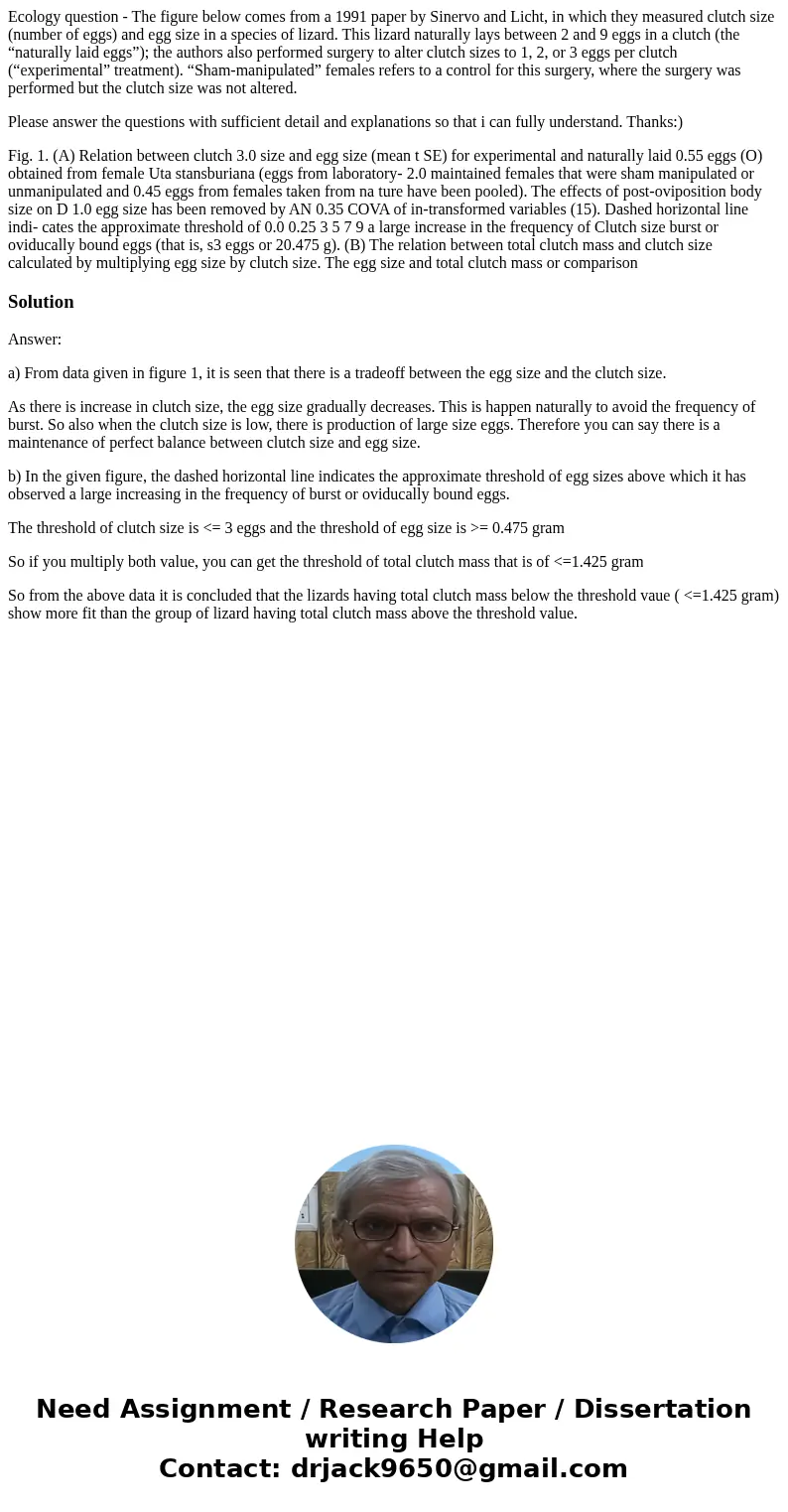Ecology question The figure below comes from a 1991 paper b
Ecology question - The figure below comes from a 1991 paper by Sinervo and Licht, in which they measured clutch size (number of eggs) and egg size in a species of lizard. This lizard naturally lays between 2 and 9 eggs in a clutch (the “naturally laid eggs”); the authors also performed surgery to alter clutch sizes to 1, 2, or 3 eggs per clutch (“experimental” treatment). “Sham-manipulated” females refers to a control for this surgery, where the surgery was performed but the clutch size was not altered.
Please answer the questions with sufficient detail and explanations so that i can fully understand. Thanks:)
Fig. 1. (A) Relation between clutch 3.0 size and egg size (mean t SE) for experimental and naturally laid 0.55 eggs (O) obtained from female Uta stansburiana (eggs from laboratory- 2.0 maintained females that were sham manipulated or unmanipulated and 0.45 eggs from females taken from na ture have been pooled). The effects of post-oviposition body size on D 1.0 egg size has been removed by AN 0.35 COVA of in-transformed variables (15). Dashed horizontal line indi- cates the approximate threshold of 0.0 0.25 3 5 7 9 a large increase in the frequency of Clutch size burst or oviducally bound eggs (that is, s3 eggs or 20.475 g). (B) The relation between total clutch mass and clutch size calculated by multiplying egg size by clutch size. The egg size and total clutch mass or comparisonSolution
Answer:
a) From data given in figure 1, it is seen that there is a tradeoff between the egg size and the clutch size.
As there is increase in clutch size, the egg size gradually decreases. This is happen naturally to avoid the frequency of burst. So also when the clutch size is low, there is production of large size eggs. Therefore you can say there is a maintenance of perfect balance between clutch size and egg size.
b) In the given figure, the dashed horizontal line indicates the approximate threshold of egg sizes above which it has observed a large increasing in the frequency of burst or oviducally bound eggs.
The threshold of clutch size is <= 3 eggs and the threshold of egg size is >= 0.475 gram
So if you multiply both value, you can get the threshold of total clutch mass that is of <=1.425 gram
So from the above data it is concluded that the lizards having total clutch mass below the threshold vaue ( <=1.425 gram) show more fit than the group of lizard having total clutch mass above the threshold value.

 Homework Sourse
Homework Sourse